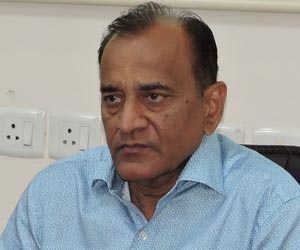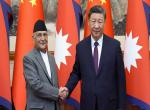The Modi government has created a flutter by its recent outreach to the minority community. It has announced scholarships to five crore students over the next five years, with a substantial number of them being girls; extended help to madrassas to equip them to teach modern subjects such as English, science and computers; and offer bridge courses to madrassa students to enable them gain higher education. Most non-partisan observers have welcomed the government’s affirmative decision and hoped that the scheme would be effectively implemented. The focus on minority welfare, and not appeasement, is but one aspect of the development. There is another, and a more fundamental one that has come to be discussed: Who is a minority?
The question arises primarily because the Constitution of India does not provide any definition of the term. This is akin to the case of ‘secular’, which was inserted in the Preamble to the Constitution in the 1970s but is not defined. The word ‘minority’ is used in the Constitution in a clutch of Articles but not in the religious framework that we have come to understand and accept it. Article 350A refers to the term thus: “It shall be the endeavour of every state and of its local authority within the state to provide adequate facilities for instruction in the mother-tongue at the primary stage of education to children belonging to linguistic minority groups…” This provision was inserted in the Constitution by the 7th Amendment Act of 1956. The minority here, thus, refers to a linguistic group which is in a numerical minority in the state as a whole as distinguished from any particular area or region therein. Article 29 too refers to the ‘minorities’ term in a linguistic and cultural sense. Experts have opined that the Article confers certain to those sections of Indian citizens that have a distinct language, script or culture of their own — whether they belong to the majority or minority community.
However, the Constitution did keep the doors open for an interpretation of the term in the religious context through Article 30, which reads thus: “All minorities, whether based on religion or language, shall have the right to establish and administer educational institutions of their choice.” But what has happened over the decades is that the ‘language’ condition has got pushed to the background and ‘religion’ has become the center-piece in defining minorities. This, despite the fact that the creation of States in the country was done primarily on a linguistic basis.
Article 30 was used by the Supreme Court in many cases it dealt with, in connection with defining minority at the state level. In the TMA Pai Foundation & Others versus the State of Karnataka, the apex court in 2002, the court judged that Article 30(1) gave the religious and linguistic minorities the right to establish and administer minority educational institutions. Interestingly, the learned Justices put off one knotty issue for a regular Bench to deal with: Since the States have been reorganised on linguistic basis and Article 30 covers both linguistic and religious minorities, the determination of minority status should be done State-wise. There was the additional question of what ‘religion’ meant as per Article 30(1). But the Bench was clear that both linguistic and religious considerations came into play in the understanding of the term ‘minority’.
The determination of minorities wrests with both the Centre and the States. The National Commission for Minorities Act has identified Muslims, Christian, Sikhs, Buddhists, Jains (added later) and Zoroastrians as minorities on a national scale, but others have been added by State governments — Jews have a minority status in Maharashtra, West Bengal and Gujarat. The situation becomes complicated when one minority group in a State, whether on the basis of religion or language, is in a majority in another State. Sikhs are a minority in most parts of the country but are in a majority in Punjab; Hindus are in a majority taken nationally but are in a minority in Jammu & Kashmir and many parts of the North-East. Should the majority groups in the country then be recognised as a minority in States where they are numerically in small numbers and derive the rights that minorities get? Conversely, should the minorities nationally be considered a majority in States where they are numerically dominant and lose the minority rights? It must be remembered that the paramount concern in the Constitution and the verdicts of the apex court, while speaking of the right of minorities to establish and administer educational institutions, flows from Article 29(1) of the Constitution, which lays down that “any section of the cities residing in the territory of India or any part thereof having a distinct language, script or culture of its own shall have the right to conserve the same”. Education, it is understood, is one medium to conserve the distinctness.
Realising the confusion that prevails, the Supreme Court felt it necessary to settle the contentious matter of definition. Just four months ago, it directed the National Commission for Minorities to examine whether Hindus, residing in States where they are in a numerical minority, can avail of benefits meant for minorities. It also asked the panel to examine if the minority status can be established by the States rather than the Centre. The court gave these directions based on a petition filed by a BJP member Ashwini Kumar Upadhyay, though it did not admit the plea. There are good reasons to clear the air. According to the 2011 Census, Hindus are a minority in eight States — from less than three per cent to under 40 per cent of the total population — and yet they have not been either recognised as minorities or given the related social benefits. The apex court had earlier refused to entertain Upadhyay’s plea and asked him to approach the National Commission for Minorities, but when the panel did not respond to the petitioner’s request, the apex court stepped in, leading to hopes that eventually, the term ‘minorities’ would get clearly defined.
The Supreme Court had been seized with the larger issue since even before. In 2016, a five-judge Constitution Bench agreed to examine whether a religious community should be granted minority status in a State where they are in a dominant position, both numerically and socially. The case it was hearing had emerged from the then Punjab government’s notification granting minority status to Shiromani Gurudwara Prabhandak Committee (SGPC)-run educational institutions. The Punjab and Haryana High Court had quashed the notification and the matter arrived at the apex court’s doorstep. Back in 2005, in the Bal Patil case, the country’s highest court had held that a community should be protected as a minority only if there was an apprehension that the community may be ‘dominated’ by other communities.
If the definition is elusive today, it was far away from clarity twenty seven years ago, when the National Commission for Minorities was set up pursuant to the National Commission for Minorities Act, 1992, of the same year. It was tasked with a mandate to protect and promote the rights of the minority communities and ensure that their grievances are effectively addressed. The panel was also given other responsibilities, such as conducting studies and submitting reports periodically to the government with a view to empowering the minorities of the country. The National Commission for Minorities began its work in a background where a precise definition of ‘minority’ did not exist. And, although it adheres to the United Nations’ 1992 declaration that promises protection of the existence of national, ethnic, cultural, religious and linguistic identity, its chief focus throughout its existence has been primarily on religious minorities, with little work done in the areas of cultural or linguistic aspects.
(The writer is an author, senior political commentator and public affairs analyst.)
(The paper is the author’s individual scholastic articulation. The author certifies that the article/paper is original in content, unpublished and it has not been submitted for publication/web upload elsewhere, and that the facts and figures quoted are duly referenced, as needed, and are believed to be correct). (The paper does not necessarily represent the organisational stance... More >>
Image Source: https://edugeneral.org/wp-content/uploads/2016/12/minorities-in-india.jpg











An illuminating article.
Post new comment